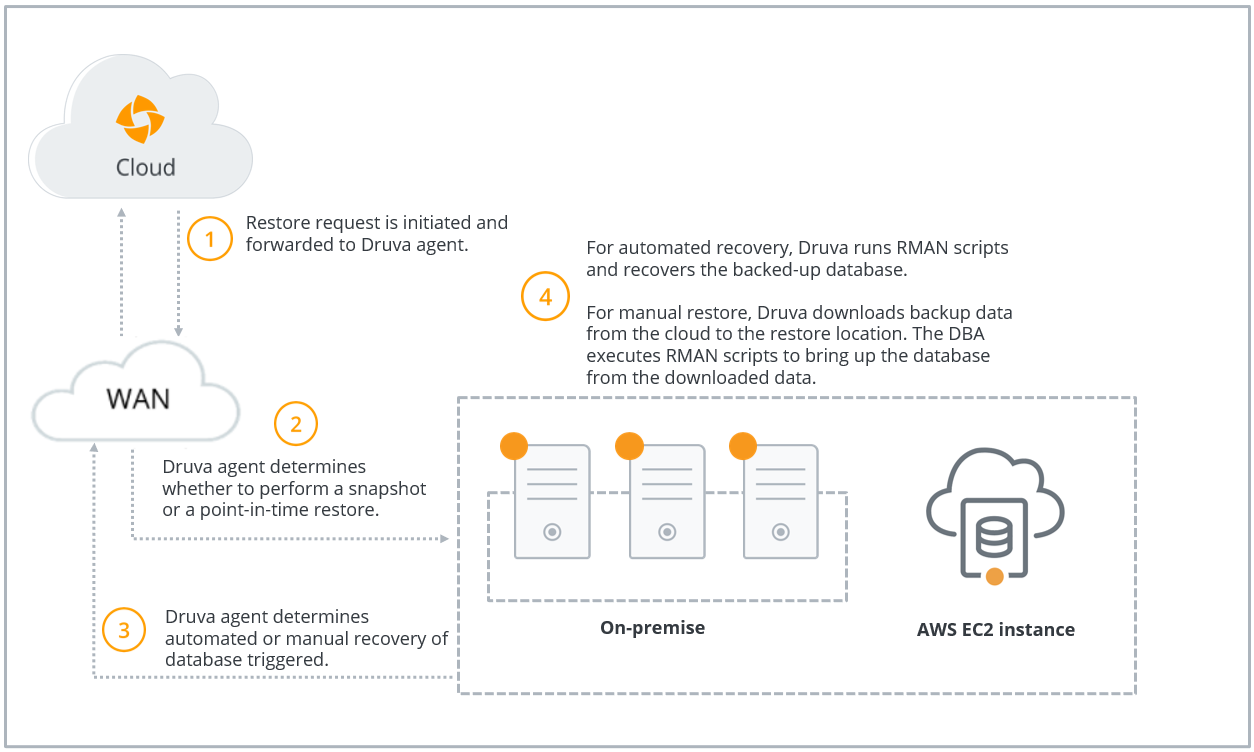Oracle database restore workflow
- Last updated
-
-
Save as PDF
-
Heads up!
We've transitioned to a new documentation portal to serve you better. Access the latest content by clicking here.
This article explains how Druva performs an Oracle database restore.
Restore Workflow
The following diagram depicts the data flow at the time of restoring Oracle databases.

| Step |
Operation |
| Step 1 |
Administrator selects a recovery point and initiates a restore. Druva agent performs pre-checks before restore and only the eligible instances are used for restore. For more information, see Restore pre-checks. |
|
Step 2
|
Administrator can choose to restore database from a recovery point or to a point in time. Additionally, the administrator can also choose to restore the wallet files from a recovery point or to a point in time.
|
|
Step 3
|
Druva determines the restore option selected by the administrator.
- For an automated recovery, the administrator can choose to restore the complete database to the original server or to an alternate server.
- For manual restore, the administrator must specify the destination server and restore location.
|
|
Step 4
|
- For automated recovery, Druva automatically runs RMAN scripts to restore and recover your database. When you select the entire database to restore, you can either restore the complete database automatically to the original Oracle server from where it was backed up or to an alternate server.
For the RAC database, all the eligible instances will be used for restore.
Additionally, if the backup is taken from a standby database, with automated recovery you can restore data either to the primary or standby server. You must provide the destination target where you want to restore this data.
- For manual restore, the requested recovery point is unpacked and downloaded to the specified restore location on the Oracle server host. The backup download location on the local Oracle server host is /<Restore_location>/<Day-MMM-DD-Hour-Min-Sec-YYYY> where:
The Restore_location is the name of the directory and Day-MMM-DD-Hour-Min-Sec-YYYY is the folder created to store the downloaded data and is derived from the recovery point that you specified to restore the database.
The recovery point location is mapped to the Oracle server host and the DBA can now use RMAN commands to recover databases on the required Oracle server host.
|
 Business
Business  Enterprise
Enterprise  Elite
Elite  Business
Business  Enterprise
Enterprise  Elite
Elite 

